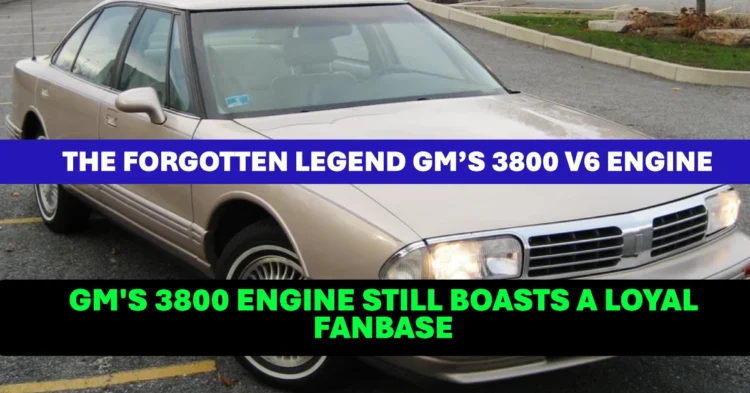The Forgotten Legend: GM’s 3800 V6 Engine
When people talk about legendary General Motors engines, the small-block Chevy V8 rightfully dominates the conversation. After all, with over 100 million produced since its debut in 1955 — including modern iterations like the LT1 and LS — it’s hard to argue against its legacy. But quietly powering over 25 million vehicles for more than three decades, GM’s 3.8-liter V6 — later dubbed the 3800 — carved out its own legacy as one of the most reliable, versatile, and underappreciated engines in automotive history.
Table of Contents
From Rough Origins to Industry Mainstay
The Birth of the V6 in North America
The roots of the 3800 trace back to the early 1960s with the Buick Fireball V6 — the first mass-produced V6 engine in North America. Its quirky firing order resulted in harsh vibrations, making it less refined than its V8 counterparts. As a result, GM offloaded the engine and tooling to Kaiser Jeep, who appreciated the V6’s rugged simplicity for use in utility vehicles like the Jeep Commando.
Reclaiming the Past for the Future
As gas prices spiked in the 1970s and efficiency became a national obsession, GM reacquired the V6 rights from AMC (then Jeep’s parent company). The engine received a smoother crankshaft and a bore increase to 3.8 liters. Suddenly, GM had a more refined and fuel-efficient alternative to their aging V8s — just in time for changing market demands.
When Buick Went Racing: The Turbocharged Turn
A Surprise Star at the Indy 500
Instead of outfitting the 1976 Indy 500 pace car with a typical gas-guzzling V8, Buick chose to showcase the updated 3.8-liter V6 — now turbocharged. Dropped into a special edition Century coupe, the turbo V6 stunned the crowd with unexpected power and agility.
The Rise of the Regal Grand National
By 1978, the turbocharged 3.8 became a factory option on production cars, most notably the Buick Regal. It didn’t take long for the platform to evolve into the Regal T-Type and, eventually, the Grand National. These high-performance variants shocked the automotive world by out-accelerating the Corvette and becoming the quickest American-made cars in 1986 and 1987.
The Workhorse That Powered the Boring but Reliable
Making Front-Wheel Drive Viable for GM
Though performance enthusiasts fondly remember the Grand National, the naturally aspirated 3800 became a pillar of GM’s front-wheel-drive transition throughout the 1980s and 1990s. The engine evolved with modern tech like fuel injection and distributorless ignition. It was then mounted sideways into nearly every full-size GM sedan.
From the Buick LeSabre to the Pontiac Bonneville, Chevy Lumina to the Oldsmobile 88 — the 3800 powered cars that may have looked uninspiring but offered owners unmatched mechanical longevity.
GM Temporarily Lays Off 700 Workers at Factories in U.S. and Canada
Chevy and GM Unveil $6,700 Direct Deposit Settlement for Millions of Customers
Cash App Settlement 2025: When Will You Get Paid & How to Check Your Payout Status?
Recall Alert 30,000 Child Car Seats Pulled for Safety Concerns
Say Goodbye Wells Fargo to Automatically Close Inactive Accounts by End of April
Built to Last: Why the 3800 Refuses to Die
Internet Lore and Real-World Proof
The 3800 earned a cult following for its near-indestructibility. Stories of engines surviving over 250,000 miles, or limping home after being hydrolocked or run with zero oil, aren’t just legend — they’re backed by countless real-world testimonials.
One popular YouTube mechanic sums it up best: “The 3800 outlasts every transmission it’s ever been bolted to — and most of the cars, too.”
Supercharged for a Final Hurrah
In the mid-1990s, the 3800 got its own performance bump with the supercharged L67 variant, pushing out 240 horsepower. While not groundbreaking by today’s standards, it offered impressive performance at the time — even if you had to drive a stereotypical “grandpa” car to get one.
Conclusion: A Hidden Giant in GM’s Engine Legacy
While the GM small-block V8 may dominate headlines, the 3800 quietly powered a generation of vehicles through both mundane commutes and moments of surprising performance glory. Rugged, efficient, and shockingly reliable, it deserves more recognition as one of the most important engines in American automotive history.

